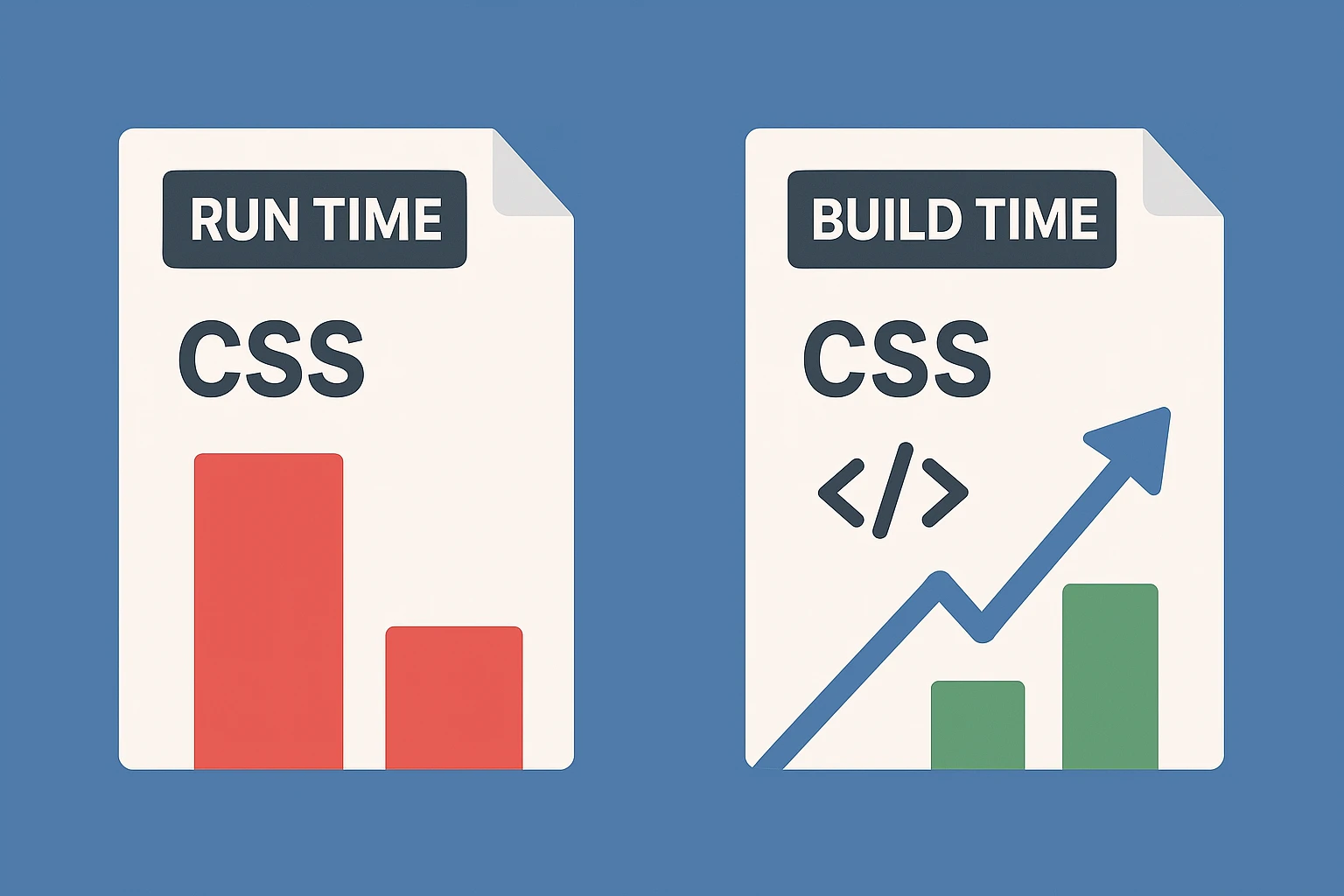In the early days of React were a styling nightmare—global stylesheets clashing, specificity wars, overwrites from hell. CSS-in-JS arrived like a superhero promising peace and order. Styled Components, Emotion, JSS — these tools made it possible to define styles right inside JavaScript, eliminating the chaos of CSS spaghetti code.
Sure, for a while, it felt like the ultimate solution: styles inside JavaScript, no more global collisions, and easy reuse of design patterns. That was the honeymoon phase—full of promise and excitement. But as React apps kept growing, cracks began to show. By 2025, that once-futuristic approach turned into an old clunker on the modern highway of web performance. What started as a dream of effortless encapsulation and convenience became a nightmare of bloated JavaScript, sluggish rendering, and styles that took forever to load.
As React apps grew larger, the flaws became glaringly obvious. Styles injected at runtime were holding us back, dragging load times like an anchor. And when big names like Meta, Atlassian, and Material UI started ditching runtime CSS-in-JS for faster, static solutions, the message was clear: we needed something better.
Now, the community is migrating faster than you can say styled.div. Build-time CSS generation, utility-first frameworks, and atomic CSS are rising to take the crown. The shift is real, and the performance gains are impossible to ignore.
At a glance
- Runtime CSS-in-JS: Inject styles in the browser, rely heavily on JavaScript, can slow page loads and complicate server rendering.
- Zero-Runtime Approaches: Pre-compile or statically generate your CSS, reduce your JS bundle, boost performance, and keep React Server Components happy.
Why are we moving on?
- Runtime overhead: Ship less JavaScript, load more quickly, and keep your user from clicking that back button. If your user is stuck waiting on style injection, you're doing it wrong.
- Server components: React's fancy new server-powered features don't love waiting on your styling library. Nobody wants to see a skeleton of "unstyled," but we did, too often.
- Utility & atomic CSS: Tailwind CSS, UnoCSS—these guys are the new rockstars. They generate a single bundle of small classes, purge the ones you don't use, and your CSS overhead basically vanishes. No more half-hour debugging sessions to figure out why your color is black or if your z-index is 9999 or 99999.
- Vanilla extraction: No, not a new ice cream flavor—this is about generating static CSS from your fancy TypeScript/JS files. You get to write styles as code, but the browser just gets regular old CSS. Win-win.
So… is CSS-in-JS Dead?
Yes and no (this is tech, after all—we can't bury anything without necromancy). We're not exactly deleting the concept of styling inside JavaScript; we're evolving it. Now we've got the so-called zero-runtime approach: your dev experience remains code-friendly while your users enjoy the bliss of immediate styles. Think Linaria, Vanilla Extract, or Compiled from Atlassian. People still love writing styles in TS, but they're shipping real CSS to production—none of that "wait for JS to handle my color scheme" nonsense.
Some teams report 30% faster load times after tossing runtime solutions. That’s a massive jump in user happiness (and your own sanity).
What Does It Mean For Your Codebase?
If you're stuck maintaining an app with runtime CSS-in-JS, consider moving on. Yes, I know: rewriting your entire design system for the Nth time is not your idea of a party. But trust me, after hearing your product manager complain about those performance metrics for the 17th consecutive sprint, you'll be eyeing a good migration plan. It's not just performance, either—these new solutions can drastically simplify theming and reduce shipping duplicates. No developer on Earth is sad about shipping less code.
The final word
Look, if you still love your old CSS-in-JS library, we're not going to bust down your door and pry it from your cold, dead hands. But if you're building something new, or you want to keep your app from performing like it’s still 2018, it’s time to embrace the new wave.
- Go with CSS Modules or Vanilla Extract if you prefer a more traditional syntax and zero runtime.
- Try Tailwind, UnoCSS, or an Atomic Approach if you love utility-first.
Keep your socks on your feet, and leave the cascade drama behind. The future is bright (and well-styled), and you don’t even have to wait for JavaScript to see it.
